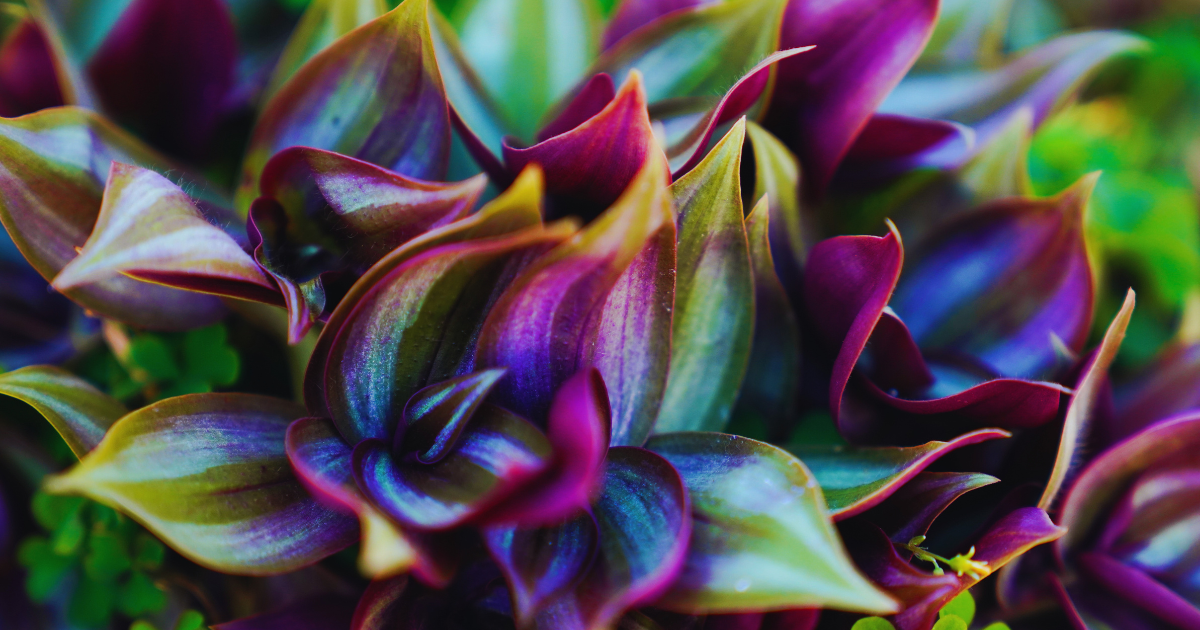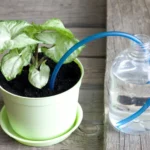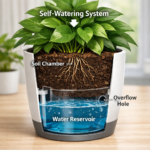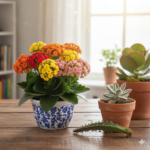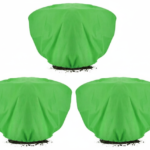The Wandering Jew plant (Tradescantia) is popular for novice and experienced plant enthusiasts. Known for its striking, colorful foliage that features shades of green, purple, and silver, this plant adds a splash of vibrancy to any indoor or outdoor space. What makes it even more appealing is how easy it is to care for, making it an excellent option for anyone looking to brighten their home with minimal effort.
Native to Central and South America, the Wandering Jew is a fast-growing plant that can be used as a hanging or trailing plant, providing a dynamic, cascading effect in planters or baskets. Its ability to increase and adapt to different environments makes it a resilient and versatile plant. However, to keep it thriving and maintain its lush appearance, it’s essential to understand its basic care needs, including light, water, and soil conditions.
In this guide, we’ll dive into everything you need to know to ensure your Wandering Jew stays vibrant, healthy, and beautiful for years.
Overview of the Wandering Jew Plant

The Wandering Jew plant (Tradescantia) is a beautiful and resilient plant known for its vibrant foliage and trailing growth pattern. This fast-growing perennial can be used as an indoor and outdoor plant, where its cascading vines add color to shelves, hanging baskets, or garden beds. What sets this plant apart is its colorful, patterned leaves, which can come in shades of green, purple, silver, and even pink, depending on the variety.
The Wandering Jew is typically low-maintenance, making it perfect for beginners and those who prefer easy-care plants. Due to its adaptability to indoor environments, it’s commonly grown as a houseplant, but it can also thrive in outdoor gardens, especially in warmer climates.
Popular Varieties of the Wandering Jew Plant
- Tradescantia zebrina – Known for its striking purple and silver-striped leaves, this variety is one of the most popular types of Wandering Jew. It thrives in bright, indirect light.
- Tradescantia fluminensis – This variety features green leaves with subtle white or cream-colored stripes. It’s a hardier version that can adapt well to lower light conditions.
- Tradescantia pallida (Purple Heart) – With deep purple leaves and stems, this variety is a favorite for adding dramatic color to indoor spaces or outdoor gardens.
- Tradescantia nanouk – A newer and trending variety, this plant has thick, colorful leaves with pink, purple, and green hues, making it highly sought-after among plant lovers.
What Makes the Wandering Jew Plant Unique?

The Wandering Jew plant stands out for several reasons, making it a favorite among plant lovers. Its most notable features are its colorful foliage and fast growth, contributing to its popularity as a vibrant and dynamic houseplant.
Colorful Foliage
One of the most striking characteristics of the Wandering Jew plant is its vibrant and colorful leaves. Depending on the variety, the plant’s foliage can range from bold greens to deep purples, with silver, pink, or white stripes. The patterns on the leaves make this plant visually captivating and add a unique decorative touch to any space. For example, Tradescantia zebrina has purple and silver stripes, while Tradescantia pallida is known for its rich, deep-purple leaves. This wide variety of colors and patterns allows plant owners to choose the perfect variety that complements their home decor.
Fast Growth
The Wandering Jew is a fast-growing plant ideal for those who enjoy seeing quick results in their gardening efforts. Within a short time, the plant can develop long, trailing vines that cascade beautifully over pots or hanging baskets. Its rapid growth also makes it an excellent choice for propagation, as it can be easily multiplied by taking cuttings and growing new plants. This fast-paced growth rate ensures that your plant stays lush and full with minimal effort as long as it receives the proper care.
The Ideal Environment for Your Wandering Jew Plant
To keep your Wandering Jew plant thriving, you must create the right environment that mimics its natural habitat. While this plant is relatively low maintenance, its vibrancy and growth can be greatly enhanced by paying attention to two critical factors: light and temperature.
Light Requirements
The Wandering Jew plant prefers bright, indirect light for optimal growth. Direct sunlight can be too harsh, causing the leaves to lose their striking color and even burn. Placing your plant near a window with filtered sunlight, such as through sheer curtains, works best. For indoor plants, a location with indirect sunlight for several hours a day will keep its foliage vibrant. If the plant isn’t getting enough light, the colors may fade, and the stems may become leggy as they stretch toward the light source.
If you’re growing your Wandering Jew outdoors, ensure it is shaded or partially shaded. Too much direct sunlight can lead to dull leaves, while too little light will affect its overall health and appearance.
Temperature Needs
Wandering Jew plants thrive in temperatures between 65°F and 75°F (18°C to 24°C), which is why they make great indoor plants. They prefer warm conditions but can handle slightly cooler temperatures if necessary. However, temperatures below 50°F (10°C) can harm the plant, causing leaves to turn brown or drop off. Avoid placing your Wandering Jew plant in areas with drafts or sudden temperature fluctuations, such as near windows during cold weather or in rooms that experience dramatic temperature changes.
Watering Your Wandering Jew Plant

Proper watering is crucial for the health and vibrancy of your Wandering Jew plant. While it’s generally a hardy plant, getting the watering balance right is essential to avoid common issues like root rot or dehydration. This plant prefers a steady moisture level in its soil, so learning the proper watering routine is crucial to its care.
How Often Should You Water?
Wandering Jew plants thrive in moderately moist soil. As a rule of thumb, water your plant once the top inch of soil feels dry. This usually translates to watering about once a week, but it can vary depending on your home’s humidity, temperature, and light exposure. You might need to water it more frequently during warmer months or when the plant is increasing. When the plant’s growth slows down in the cooler months, reduce the watering schedule slightly to prevent waterlogging.
Check the soil: Water your Wandering Jew when the top inch of the soil feels dry.
Frequency: Typically, you’ll need to water about once a week, but this can vary depending on your home’s temperature, humidity, and light conditions.
Adjust for seasons: In warmer months, you might need to water more frequently, while in colder months, reduce the frequency as the plant’s growth slows down.
Well-draining pots: Always ensure your plant is in a pot with proper drainage to prevent standing water.
.
Signs of Overwatering and Underwatering
Recognizing the signs of overwatering and underwatering can save your Wandering Jew plant from severe damage. Overwatering often leads to yellowing leaves, mushy stems, and root rot. If you notice the plant’s leaves turning yellow or dropping off, it might be getting too much water. Ensure the pot has proper drainage, and let the soil dry out between waterings.
- Overwatering:
- Yellowing or dropping leaves
- Mushy stems
- Root rot from excess water
- Solution: Allow the soil to dry out and ensure the pot has drainage.
- Underwatering:
- Brown, crispy leaves
- Wilting or shriveling foliage
- Dry soil
- Solution: Increase watering, but avoid letting the plant sit in soggy soil.
Soil Conditions and Fertilizer
Providing the right soil and a balanced fertilizer is essential for keeping your Wandering Jew plants healthy and thriving. These factors ensure your plant gets the nutrients it needs for robust growth and vibrant foliage.
Choosing the Right Soil
- Well-draining soil: Use a potting mix that allows water to flow freely. A general-purpose indoor plant soil or a mix for houseplants works well.
- Slightly acidic to neutral pH: Wandering Jew plants prefer soil with a pH between 5.5 and 7.
- Optional add-ins: To enhance drainage, mix in perlite or sand.
- Avoid compacted soil: Heavy, compact soil can trap water, leading to root rot. Always opt for loose and airy soil.
Fertilizer Tips for Healthy Growth
- Frequency: Fertilize your Wandering Jew plant every 4-6 weeks during the growing season (spring and summer).
- Type of fertilizer: Use a balanced, water-soluble fertilizer with equal parts nitrogen, phosphorus, and potassium (NPK). A 10-10-10 or 20-20-20 formula works well.
- Reduce in winter: During colder months, when the plant’s growth slows, reduce fertilizer use to avoid overfeeding.
- Dilution: Always dilute the fertilizer to about half-strength to prevent nutrient burn.
Repotting the Wandering Jew Plant

Repotting your Wandering Jew plant ensures it has enough space to grow and keeps its roots healthy. Over time, the plant will outgrow its pot, and repotting is the key to maintaining healthy growth.
When to Repot
- Growth spurt: Repot your Wandering Jew when it becomes root-bound or outgrows its current pot, typically every 1-2 years.
- Root health: If roots grow out of the drainage holes or circling the pot, it’s time to repot.
- Signs of stress: Yellowing leaves or poor growth can indicate the plant needs more space for its roots.
Steps to Repot Your Plant
- Choose a larger pot: Select a pot that is 1-2 inches larger in diameter than the current one.
- Prepare the soil: Use fresh, well-draining potting mix as described above.
- Remove the plant: Pull the plant from the pot, loosen any tangled roots, and trim any damaged or overly long roots.
- Place the plant in the new pot: Fill the bottom with soil, place the plant, and add soil around the edges, pressing gently.
- Water thoroughly: Water well after repotting and letting it settle in its new home.
Pruning and Propagation
Pruning and propagation are great ways to maintain a healthy and bushy Wandering Jew plant while growing new plants to share with others.
How to Prune the Plant for Shape
- Regular trimming: Reduce the longer vines to encourage new growth and compact the plant.
- Pinch back: For bushier growth, pinch off the tips of the stems regularly to prevent them from becoming too leggy.
- Cutting back dead leaves: Remove any yellow or damaged leaves to maintain the plant’s overall appearance.
Propagation Tips for Beginners
- Take stem cuttings: Snip a few healthy stems, ideally about 4-6 inches long, just below a leaf node.
- Root in water: Place the cuttings in a glass, ensuring the leaves are above the waterline. Change the water every few days.
- Planting: Once roots develop (usually within 1-2 weeks), transfer the cutting to a pot with soil.
- Humidity: To encourage quicker rooting, place the pot in a warm, humid location or cover it with a plastic bag until the roots are established.
Common Problems and How to Fix Them
Despite being a relatively easy plant to care for, the Wandering Jew can encounter a few problems that may affect its health. Promptly recognizing and addressing these issues will help your plant recover and continue thriving.
Dealing with Pests
- Common pests: The Wandering Jew is most commonly affected by spider mites, aphids, and mealybugs. These pests can cause damage by feeding on the plant’s sap.
- Signs of infestation: Look for sticky residue on the leaves, small webs, or discolored, deformed leaves.
- How to fix it: Spray the leaves and stems with insecticidal soap or a natural solution like neem oil. Remove the affected leaves and isolate the plant for severe infestations until the pests are gone.
- Prevention: Keep your plant clean by wiping the leaves regularly and avoiding overwatering, which can attract pests.
Yellowing or Wilting Leaves
- Overwatering: Yellowing leaves often signal overwatering. Ensure the soil is drying out between waterings and the pot has proper drainage.
- Underwatering: Wilting or dry, crispy leaves could indicate that the plant isn’t getting enough water. Increase watering and ensure the soil stays slightly moist.
- Nutrient deficiency: Yellowing leaves can also indicate a lack of nutrients. Use a balanced fertilizer to replenish the plant’s nutrition.
Benefits of Growing a Wandering Jew Plant
The Wandering Jew plant offers more than just aesthetic appeal—it brings practical benefits to your home.
Air-purifying properties
- The Wandering Jew is known for purifying the air by removing harmful toxins such as formaldehyde and benzene.
- Having this plant in your home can improve indoor air quality, helping to create a healthier environment.
Aesthetic appeal
- With its vibrant, multicolored leaves and fast-growing nature, the Wandering Jew adds color and texture to any room.
- Its trailing vines make it an ideal plant for hanging baskets, shelves, or a decorative centerpiece in your living space.
Best Spots in Your Home for a Wandering Jew
Choosing the right spot for your Wandering Jew plant is critical to its success.
Indoors vs. Outdoors Placement
- Indoors: Ideal spots include windowsills or areas with bright, indirect light. A bright bathroom or kitchen window can provide the humidity and light the plant loves.
- Outdoors: In warmer climates, the Wandering Jew can thrive in a shaded garden or balcony. However, it doesn’t tolerate frost and must be brought inside if the weather turns cold.
Seasonal Care Tips
Different seasons require slight adjustments to keep your Wandering Jew plant looking its best.
Summer vs. Winter Care
- Summer: During the warmer months, the plant will grow more actively. Increase watering slightly and ensure it receives plenty of bright, indirect light. You can also fertilize more frequently to support this growth.
- Winter: In cooler months, reduce watering as the growth slows. Keep it in a warmer location, but avoid placing it near cold drafts or windows that get too chilly. Also, fertilization should be reduced every 6-8 weeks.
How to Keep Your Wandering Jew Vibrant and Healthy
Maintaining the health and vibrancy of your Wandering Jew plant requires consistent care and attention to its needs. Follow these detailed points to ensure your plant remains lush, colorful, and thriving.
Provide the Right Amount of Light
- Bright, indirect light: Wandering Jew plants prefer bright but filtered sunlight. Place them near windows where they receive ample light, but avoid direct sun as it can scorch the leaves.
- Artificial light: If natural light is insufficient, you can supplement it with grow lights to maintain healthy growth, especially during winter.
Water Correctly
- Consistent moisture: Keep the soil evenly moist. Water when the top inch of soil feels dry. Ensure the pot has good drainage to prevent waterlogging and root rot.
- Avoid soggy soil: Overwatering can cause root rot. Allow the soil to dry slightly between waterings.
- Watering method: Water thoroughly until water runs out of the drainage holes, but don’t let the plant sit in standing water.
Fertilize Regularly
- Monthly feeding: During the growing season (spring and summer), fertilize every 4-6 weeks using a balanced, water-soluble fertilizer.
- Diluted strength: Use a half-strength fertilizer to prevent overfeeding and nutrient burn. Reduce feeding in the fall and winter when the plant’s growth slows.
Prune for Shape and Health
- Pinch back regularly: Prune the plant every few months to keep it bushy and encourage healthy, new growth.
- Cut leggy stems: Trim any long or straggly vines to maintain the plant’s shape and size. Use sharp scissors or pruning shears to avoid damaging the plant.
- Remove damaged leaves: Yellow or brown leaves should be removed to prevent disease and keep the plant looking fresh.
Monitor Temperature and Humidity
- Ideal temperature: Wandering Jew plants thrive in temperatures between 60-80°F (15 and 27°C). Avoid cold drafts, especially in the winter, as they can stress the plant.
- Maintain humidity: These plants enjoy a humid environment. To increase humidity, consider placing a humidifier nearby, misting the leaves occasionally, or grouping plants.
Report When Necessary
- Every 1-2 years: Report the Wandering Jew when it becomes root-bound or outgrows its current pot. This gives the roots more space to grow and ensures the plant remains healthy.
- Choose a slightly larger pot: Repot into a container that’s 1-2 inches larger in diameter than the current one, using fresh potting mix for better drainage.
Watch for Pests
- Inspect your plant regularly for common pests such as spider mites, aphids, and mealybugs. These pests can damage the leaves and stunt growth.
- Natural treatments: Treat any infestations with neem oil or insecticidal soap. Regularly wiping the leaves with a damp cloth can also help prevent pests.
Keep the Plant Clean
- Dust the leaves: Dust can block the light and make the plant look dull. Wipe the leaves with a damp cloth to keep them clean and allow them to absorb more light.
- Avoid water on leaves: When watering, avoid getting the leaves wet, as this can lead to fungal problems, especially in humid conditions.
Conclusion
The Wandering Jew plant is a beautiful and low-maintenance addition to any home or garden. With its vibrant, multicolored foliage and fast-growing nature, it’s no wonder this plant is a favorite among indoor plant enthusiasts. By providing the right care, including proper lighting, watering, soil, and occasional pruning, you can enjoy a lush and healthy plant for years to come.
The Wandering Jew’s ability to purify the air, its aesthetic appeal, and its ease of propagation make it a rewarding choice for anyone looking to enhance their indoor space. Remember to monitor its water levels, avoid direct sunlight, and give it a proper spot with sufficient humidity to thrive. With attention and care, your Wandering Jew plant will remain a beautiful and thriving centerpiece in your home.
FAQs
1. How often should I water my Wandering Jew plant?
Water your Wandering Jew when the top inch of soil feels dry. Typically, this will be once a week, but adjust based on humidity and temperature.
2. Can I grow the Wandering Jew outdoors?
Yes, in warmer climates, you can grow the Wandering Jew outdoors in shaded areas, but bring it inside during cold months.
3. What causes my Wandering Jew leaves to turn yellow?
Yellowing leaves may indicate overwatering, poor drainage, or a nutrient deficiency. Check the soil moisture and consider feeding the plant.
4. How do I propagate a Wandering Jew plant?
Place a 4-6 inch cutting in water, and wait for roots to develop. Once rooted, transfer it to soil.
5. Is the Wandering Jew plant toxic to pets?
Yes, the Wandering Jew plant is toxic to pets if ingested, so keep it out of reach of cats and dogs.

